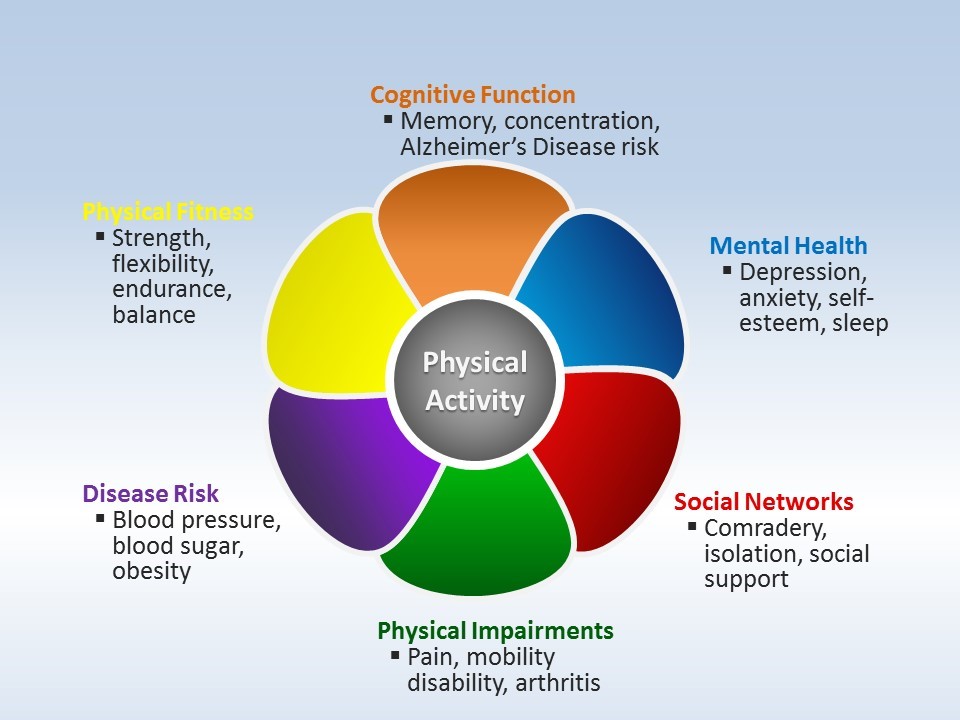Physical Activity Programming: An Opportunity to Promote Health, Well-Being Among Military Veterans

Written By: Celina H. Shirazipour, PhD; Research Scientist, Research Center for Health Equity, Cedars-Sinai Medical Center, Assistant Professor-in-Residence, Department of Medicine, University of California Los Angeles - Katherine S. Hall, PhD; Associate Professor, Durham Veterans Affairs Health Care System, Duke University Aging Center and Department of Medicine
The benefits of regular physical activity (i.e. sport, exercise, and recreation) for mental and physical health are well-substantiated. Military personnel are generally more physically active than civilians; however, the transition to life as a veteran is characterized by a steep drop in physical activity, and a sharp rise in obesity and related health conditions. Veterans may also bear physical (e.g., chronic pain, traumatic brain injury) and psychological injuries (e.g., post-traumatic stress, depression) stemming from their service, which can contribute to isolation and poor health. Physical activity promotion among veterans, particularly those with physical limitations and/or mental health conditions, represents an opportunity to promote holistic well-being.
What are the benefits of Physical Activity for Veterans?

Veterans have a history of physical fitness from their time in the service. The common perception is that service members value health and physical activity and will continue to be active throughout their lives, but the evidence suggests otherwise.
Community-based physical activity programs could play a critical role in helping veterans transition from highly structured military fitness training to lifetime physical activity. However, tailoring programming to provide quality experiences that support involvement and long-term participation is essential.
How do we successfully include veterans with illnesses and injuries in our PA programs?
Including physical activity programming for veterans in community organizations is important for helping veterans make healthy transitions to life after military service. Below are some key things to consider for making your program a success - some points are specific to veterans while others are true across populations.
- Connect with your local Veterans Affairs (VA) facility. Many VA centers and hospitals have rehabilitation specialists who can help get the word out about your program and provide important feedback throughout the program development process.
- How best to serve the veteran population? Veterans are a diverse group of individuals, with sub-groups that may differ across service eras (e.g., Iraq vs Vietnam), age, type of illness and injury (e.g. psychological and/or physical), and gender. It is important to consider the group you would like to target and what their needs may be, as these factors may impact their comfort in an environment or with a particular type of activity. For example, a noisy gym may be unpleasant for a veteran with post-traumatic stress, and they may drop out of the program without additional support. Engaging veterans early in the process and allowing them to articulate their needs and goals for the program is a great way to start!
- The original social network. The presence of military peers in a program is key to quality physical activity participation post-illness and injury. Peers provide an important sense of belonging and are also important sources of information. For example, peers with similar experiences can share information on other programs in the region, and life skills. Many veterans learn about life hacks for their illness or injury, as well as new equipment and treatment options through their peers. If there isn’t a large military community in your region, you can also integrate civilians with similar illnesses and injuries to provide a peer environment. Team Red White and Blue provides a great model for this approach.
- We are family. For some individuals, including family provides opportunities to re-connect post-illness and injury. However, for other individuals, including families may result in limited independence. For example, families may stop an individual from trying an activity because of safety concerns. One can strike a balance by having veteran-specific activities with family events scheduled throughout the year. Opportunities for family interaction may be most beneficial when they provide opportunities for family members to interact, share their stories, learn from each other, and realize that they are not alone in living their experiences.
- What type of activity helps to increase physical activity for veterans? Physical activity doesn’t have to be high-intensity or competitive to be effective. It has to meet the goals, lifestyle, and abilities of the individual. For example, some individuals may prefer higher intensity activities such as running competitions or mountain climbing while others may prefer less intensive activities such as walking due to pain and other functional limitations, as well as general personal preference.
We hope the summary and programming tips above are helpful to veterans and health professionals alike. Further guidance about health promotion in veterans can be found in the resources below.
Physical Activity Resources for Community Programs and Veterans
Developing Programming:
- A Blueprint for Building Quality Participation in Sport: https://cdpp.ca/resources-and-publications/blueprint-building-quality-participation-sport-children-youth-and-adults
- Physical Activity Guidelines for Americans 2018: https://health.gov/paguidelines/second-edition/report.aspx
- Trauma-Sensitive Health Promotion: http://www.thebreathenetwork.org/supporting-survivors-of-military-sexual-trauma-with-yoga
Sample Community Programs:
- Team Red, White, & Blue: https://www.teamrwb.org
- Warrior Sailing: http://warriorsailing.org
- Gerofit: https://www.va.gov/geriatrics/gerofit/gerofit_Home.asp
- CanPraxis: https://canpraxis.com
- Operation Surf: http://amazingsurfadventures.org/programs/operation-surf/
Some links and videos about the benefits of Veteran PA programming:
- The Invictus Games: https://www.youtube.com/watch?v=PpnYcXJVWNM
- National Veterans Golden Age Games: https://www.youtube.com/watch?v=yCJieILvV8Q
- Warrior Wellness, Exercise for Older Veterans with PTSD: https://www.research.va.gov/currents/0418-Older-Veterans-with-PTSD-take-part-in-exercise-program.cfm
It may be helpful to learn more about military culture. Here are some links to get you started:
- Community Provider Toolkit on Military Culture and Related Resources: https://www.mentalhealth.va.gov/communityproviders/military_resources.asp
- VHA Train, Free Training Modules in Military Culture for the Public: https://www.train.org/vha/welcome
More Articles

Physical Activity for Older Adults: It’s Never too Late to Improve Your Health
Despite common misconceptions, older adults can benefit from engagement in physical activity.

Prevention, Survival and Recovery from Cancer: The Case for Exercise
Research shows that exercise and physical activity can help prevent cancer, as well as increase odds for survival and improve recovery. Learn ways to improve functioning and quality of life after cancer with exercise.


